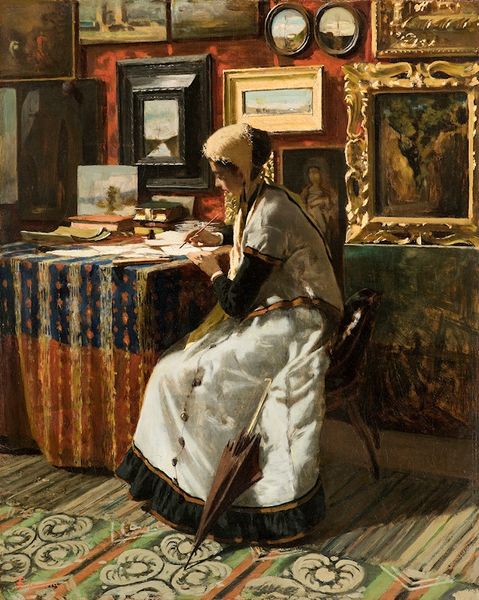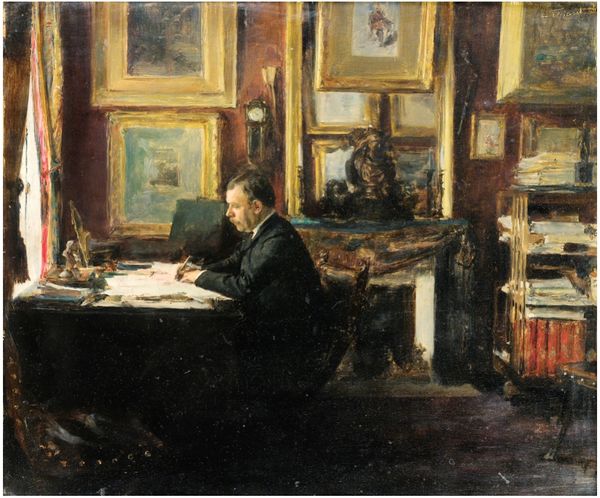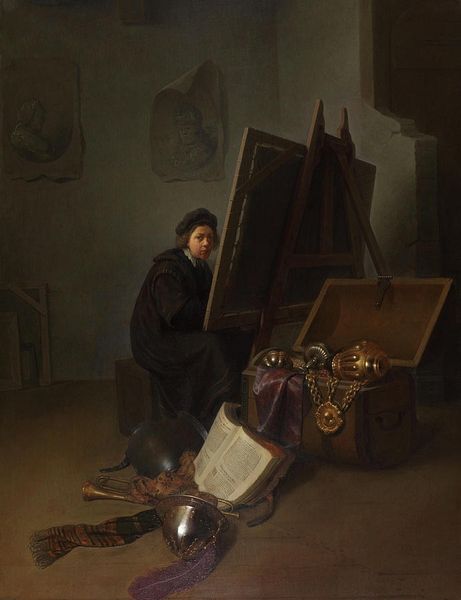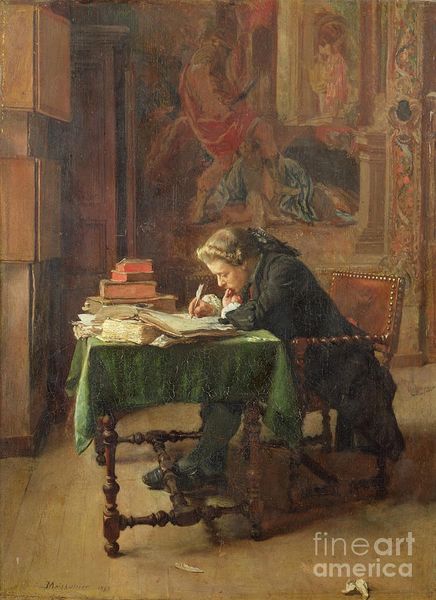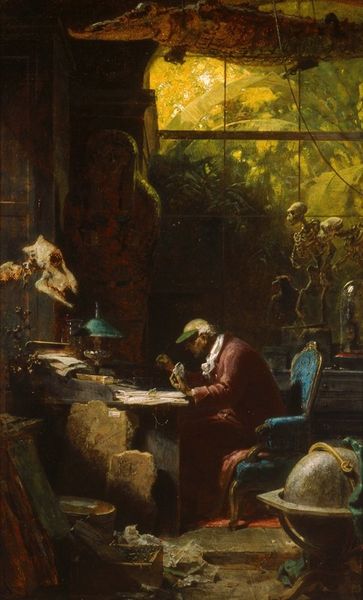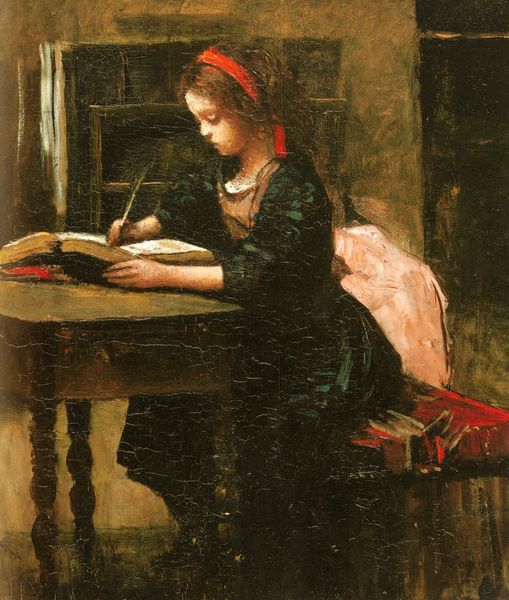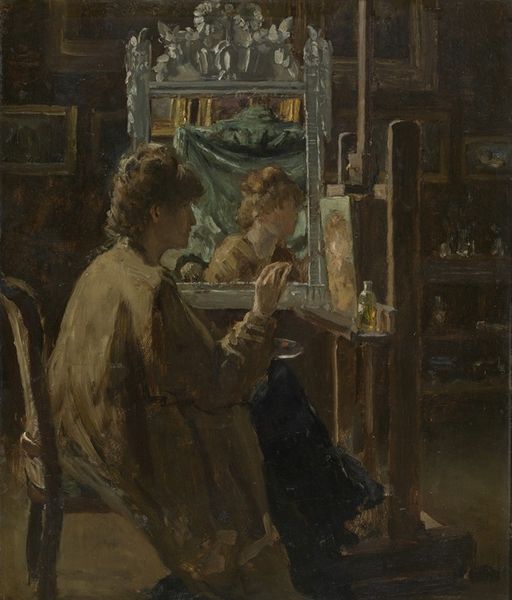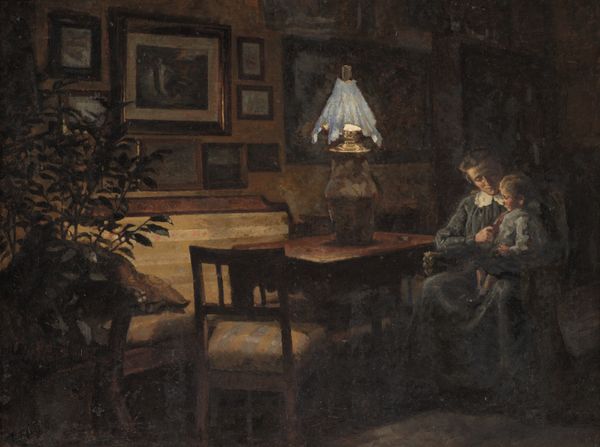
Copyright: Public Domain: Artvee
Curator: This oil painting, simply titled "A Painter," was completed in 1855 by the celebrated French artist Ernest Meissonier. What strikes you about it? Editor: The overwhelming sense of intense concentration. His entire posture, the way he leans in, suggests a near-obsessive focus. The studio is secondary, just a muted backdrop for his artistic ritual. Curator: Meissonier was indeed known for his meticulous detail and exhaustive research. This image offers a fascinating glimpse into the Romantic era’s evolving view of the artist: no longer merely a craftsman, but a solitary, almost monastic figure dedicated to their art. The clothing signals a painter but is also reminiscent of those old images of writers and academics from the previous century. Editor: Absolutely. Notice the almost theatrical quality of the lighting—it’s not about naturalism, it's about mood. He seems to have turned his back on a bright daylight that streams from a window at his back so he could focus more intensely on the dim details of his painting. The artist, cloaked in shadow, wrestling with something deeply personal. What do you make of that bust lurking in the background? Curator: It speaks to a lineage, the weight of artistic tradition. Meissonier was deeply aware of his place in the academic hierarchy, and constantly strived for recognition and validation from the Parisian art establishment. We cannot discount that element. Editor: True, but it also points to aspiration, the artist setting himself in conversation with the masters of the past. Those statues serve as talismans of sorts. A symbol of an effort for immortal status, which any symbol is really an effort to do just that: establish some sort of monument against the void. What do you make of the colors and details in this painting of "A Painter" in painting itself? It almost seems as though there are not colors at all; all tans, grays and browns, that it may as well be sepia toned as the photos from the future would have been. Curator: Interestingly, this subdued palette, while reflecting Meissonier's training, also contributed to the critical dismissal he sometimes faced. Some argued his works lacked the bravura and daring color experiments of his contemporaries. Even within the Realist movement, there was a struggle between meticulousness and painterly freedom. Editor: It's a battle fought on many canvases, in many studios, I think. Though, perhaps not for myself... Now, on a closing note: The way that this captures not just an artist, but art making. One might say Meissonier truly painted this from the inside out, as I myself feel I paint, one color on top of the next, inside out. Curator: A painting *about* painting, steeped in its cultural context and enduring artistic mythologies. Food for thought, indeed.
Comments
No comments
Be the first to comment and join the conversation on the ultimate creative platform.


